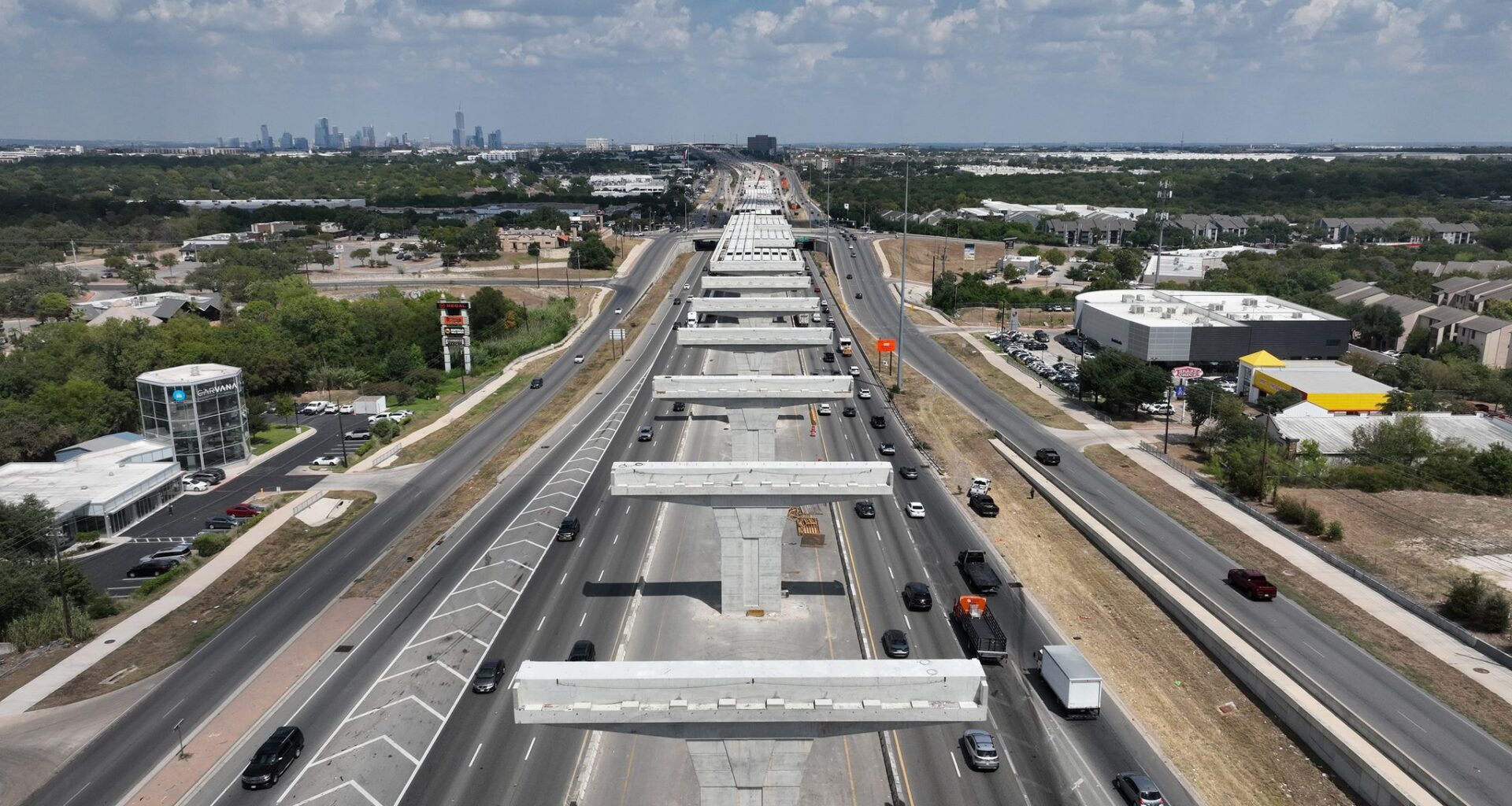Construction is now underway on the $4.5 billion, 8-mile rebuild of Interstate 35 through Austin, environmentally approved in August 2023. The project will remove the existing decks, lower the highway and add two high-occupancy lanes in each direction. For Austinites watching the cranes and barricades rise, the changes are already real.
What’s less visible — and far more consequential — is how quickly the Texas Department of Transportation approved its own environmental review. The agency took just 226 days from releasing a draft Environmental Impact Statement (EIS) in January to signing its Record of Decision in August. Across the rest of the country, similar reviews take an average of 2.7 years, according to the Federal Highway Administration’s database.
Why the rush? Because TxDOT didn’t need Washington’s approval. Texas is one of only seven states that has taken over the federal government’s role under the National Environmental Policy Act (NEPA), the law requiring agencies to study the environmental and social effects of major projects. Through this “NEPA Assignment,” TxDOT acts as both the project sponsor and the regulator — essentially grading its own homework since 2014.
Supporters call this efficient government, cutting red tape to speed up construction. But speed comes at a cost. When the same agency building the highway also determines whether it adequately protects the environment and surrounding communities, the checks and balances that protect the public can break down.
Without federal oversight, the balance of accountability shifts dramatically. TxDOT no longer answers to federal reviewers who might challenge weak analysis, insufficient data or ignored public comments. And unlike the federal government, Texas doesn’t publish its NEPA approval statistics in a public database. That lack of transparency makes it nearly impossible to track whether these reviews are thorough — or merely fast.
The risks aren’t just theoretical. To gain the authority to self-approve projects, Texas had to waive its sovereign immunity and accept federal court jurisdiction if lawsuits arise. The community group Rethink35 is suing TxDOT, arguing the agency failed to properly analyze the project’s air-quality impacts — especially fine particulate matter (PM2.5), a pollutant so small it can lodge deep in the lungs and enter the bloodstream, potentially causing serious heart and lung disease. As of September, a judge was still reviewing the case.
It’s worth noting that I-35’s north and south expansion segments — together covering 21 miles — took longer to clear their environmental reviews, even though they’re less complex. The central section’s lightning-fast approval raises questions about how carefully TxDOT considered public comments, alternative designs and health impacts in its rush to break ground.
This is not an argument against building or improving infrastructure. It is an argument for balance and credibility. When the same agency proposing a project also approves its environmental review, the public loses a critical layer of independent oversight. That undermines trust — especially in a city like Austin, where environmental justice, neighborhood displacement and air quality remain front-of-mind concerns.
Federal oversight is not perfect, but it exists for a reason: to ensure that projects benefiting some do not harm others without scrutiny. When states take full control, they must replace that external accountability with something equally rigorous — or risk losing the public’s faith entirely.
In 2035, when the dust has settled and the expanded highway is open, will Austinites look back on TxDOT’s sprint toward self-approval and call it a good deal for Texans? Or will we wish the referee hadn’t been the one running the race?
Greg Griffin is a professor of practice at the University of Texas-San Antonio and author of “Transport Truths: Planning Methods and Ethics for Global Futures.”

